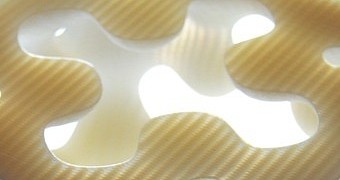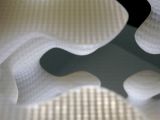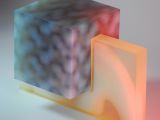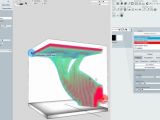Panagiotis Michalatos is an architect and assistant professor in architecture at the Harvard Graduate School of Design, but his latest creation is in the field of virtual modeling software. He collaborated with Andrew (Andy) Payne, also an architect and Senior Building Information Specialist at CASE.
What the two developers created is a software engine, a stand-alone voxel modeling engine to be precise, which can define objects as dense representations of material properties through a 3D volume.
They call the engine “Monolith” and based it around the concept of the voxel, the three-dimensional equivalent of pixels.
The pair got the idea to create Monolith when they saw that most 3D CAD programs (computer-aided design) lacked the ability to depict the spatial variations inherent in material properties.
While the applications can deal with surface modeling paradigms representing solid objects, they do so by setting external boundaries.
Monolith, on the other hand, can define the interior of the objects as well, using voxels. This allows it better support for 3D printers equipped with multiple print heads and which, thus, can deposit different materials in a single build volume.
The voxel can describe the physical location of a unit, the color and even the material properties (elasticity, toughness, etc.).
How the Monolith works
Monolith allows people to define the voxel channel values individually, defining them by listing the density value for each XYZ coordinate in a given space.
The channels can be combined and recombined for a virtually limitless number of variations, acting as controlling variables for lines, boxes, curves, effects, points, etc. This is similar to how Gaussian blur effects and other color variations are enabled on 2D images.
Topology optimization is included, as are modes that let designers extrapolate more sophisticated material traits, like the Von Mises and Principal stress distribution. Deflection characteristics of materials under loading conditions can be taken into account as well.
Monolith software compatibility
It should support any 3D printer, since it can save files in all relevant formats, like stereolithography (.STL), VRML 2.0 (.WRL), and Rhino (.3DM). You can download the Monolith already if you feel like giving it a go.
The video embedded below shows how the Topology Optimization works. It should give you an idea of just how much better and sophisticated 3D printed objects can become now.

 14 DAY TRIAL //
14 DAY TRIAL // 


